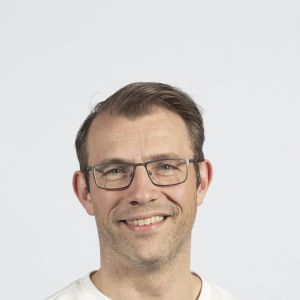Rory de Vries
Which researchers are involved in Durable? We’d like to introduce a few of them to you. This time in the spotlight: Associate Professor Rory de Vries, workinggroup leader at the Department of Viroscience at Erasmus MC. Rory’sgroup includes 17 PIs, postdocs, PhD candidates, and analysts.
Can you share a little about yourself and what kind of research you are involved in?
“Myresearch group studies the immune response to respiratory infections. Thissubject has fascinated me ever since my PhD research on the impact of themeasles virus on the immune system. In this group, immunology and virology arecombined — to me, a perfect middle ground. In our research, we examine what isimportant for vaccinations: how can you tell whether people are immune or not,and whether vaccines work? It is crucial that we understand the immune responseto respiratory viruses, so we can improve vaccination.”
Hoe does your research fit into the bigger picture of Durable?
“The Durable project has much in common with our approach. The focus of our research is not so much on pathogens themselves, but rather on how the immune system works. Influenza, corona — to the immune system, respiratory viruses look very similar, and it therefore responds in comparable ways to different infections. This allows us to adapt quickly when the situation requires it. We design our research methods so that, when a particular virus emerges, the protocols are already in place. For example, when mpox recently appeared, we were able to get started right away.”
“The Durable project also focuses on countermeasures for various epidemics. For instance, we have now been asked to conduct research on H5, the avian influenza virus. Because we work in such a flexible way, this is no problem for us. The downside of this approach, however, is that there is less time for in-depth research.”
What motivates you to be part of Durable?
“I like that the project focuses on urgent situations. Instead of working on a fixed topic for two years, you can respond immediately to what is needed. That gives a kind of adrenaline rush, especially because the research always has to be completed quickly.”
“The international collaboration within Durable is certainly another advantage. We learn from one another and, for example, exchange reagents. Soon, someone from Portugal will visit to gain experience with the assays of our Work Package. We will then provide the reagents for the rollout of the assays in Portugal. At the same time, the Statens Serum Institute is also studying influenza immunology, and we plan to use the same reagents there as well. This allows us to generate comparable data, which greatly increases the impact of the studies. Moreover, harmonising study protocols is important for Hera.”
What do you expect to accomplish in the upcoming years within your own institute and by being connected to Durable?
“At the moment, within Durable, we are working on avian influenza vaccines and analysing immune responses after vaccination. In this study, we look at how the immune system functions in both the blood and the nose against H5.”
“Within my own research group, we focus on how immunity to respiratory viruses is measured. The current method, which relies on blood samples, may not be the most ideal — ideally, you would want to stop the virus earlier. That’s why we are now looking at mucosal immunity: what immune responses can we find in the respiratory tract? To study this, we use a nasal swab from which we read immunological parameters. We aim to further develop this method. This is the direction the field is moving in, and it would therefore also be relevant for a future phase of Durable. Vaccines prevent disease, but they still do not sufficiently reduce viral transmission. That is the next step we would like to focus on in follow-up research within Durable.”
What do you expect from Durable in the upcoming near future?
“A lot has happened over the past two years — the labs are working together more and more closely. As a result, you can really see greater synergy emerging. I hope that in the coming years we can carry out even more joint research, so that we can achieve that ‘1+1=3 effect’.”

